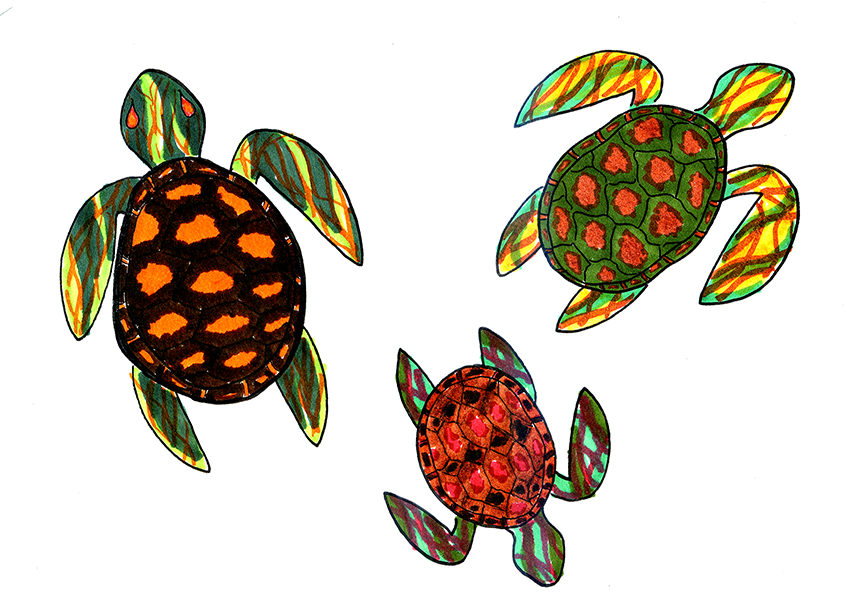The turtle pond lies just north of the UT Tower and houses UT’s unofficial school mascots, the resident turtles. The turtle population has increased due to people treating the pond as a place to dump turtles, said herpetology curator Travis LaDuc.
In 2014 there were 40 turtles in the pond, but now, the number has fluctuated to well over 100, LaDuc said. LaDuc said the spike in turtles is not from them reproducing.
“What’s happening is people end up dumping turtles into the pond, either turtles they find and think need a new home or they’re leaving pets,” LaDuc said.
He said he encourages students not to add to the pond because it can stress turtles out or disturb the ecosystem.
“Now (that) they’re (turtles) in this very different environment with a whole bunch of different friends … I can see some turtles doing extremely poorly,” LaDuc said.
Laduc said he knows the turtles aren’t reproducing much because the pond lacks proper breeding habitat.
According to Sciencing.com, red-eared sliders, the species LaDuc said are most prevalent in the pond, lay their eggs in a safe spot of sand which is a difficult find on campus. LaDuc said even if turtles can locate a nesting spot, predators such as raccoons and possums get to the nests before eggs can hatch.
“I’m pretty confident that when you see baby turtles in the pond (they) are probably turtles that people have introduced. They’re really not naturally increasing their population,” LaDuc said.
Although the turtles may be the superstars of the pond, they’re not the only occupants. According to the pond’s informational sign, the pond is a miniature ecosystem which includes fish, algae and a variety of plants.
LaDuc said that the UT turtle diet consists of fish that are already there or that people add. The turtles can also sink their beaks in student-supplemented lunches and even the occasional pigeon that flies a little too close.
“We really don’t have to worry about feeding them … we try to provide appropriate sites for them to bask, where they can get out of the water and (we) make sure that there’s a constant flow of water,” LaDuc said.
The pond serves a variety of purposes for UT students and faculty. Professors have taken students to sample the water and collect algae from the turtle’s shells, and the pond has been used as a design model for off-campus private ponds, LaDuc said.
LaDuc takes his herpetology class down to the pond to observe up close turtle behavior, an experience that he said leaves an impact on his students.
“They’re gonna start being very cognizant of what’s going on in that pond … it reinforces their appreciation for wildlife,” LaDuc said.
If you haven’t seen the turtle pond yet, or if it’s been a while since your last visit, take a break from the 40 Acres hustle and let the turtles remind you to slow down.
Editor’s Note: Campus Creatures is a recurring column that discusses the wildlife at UT.















